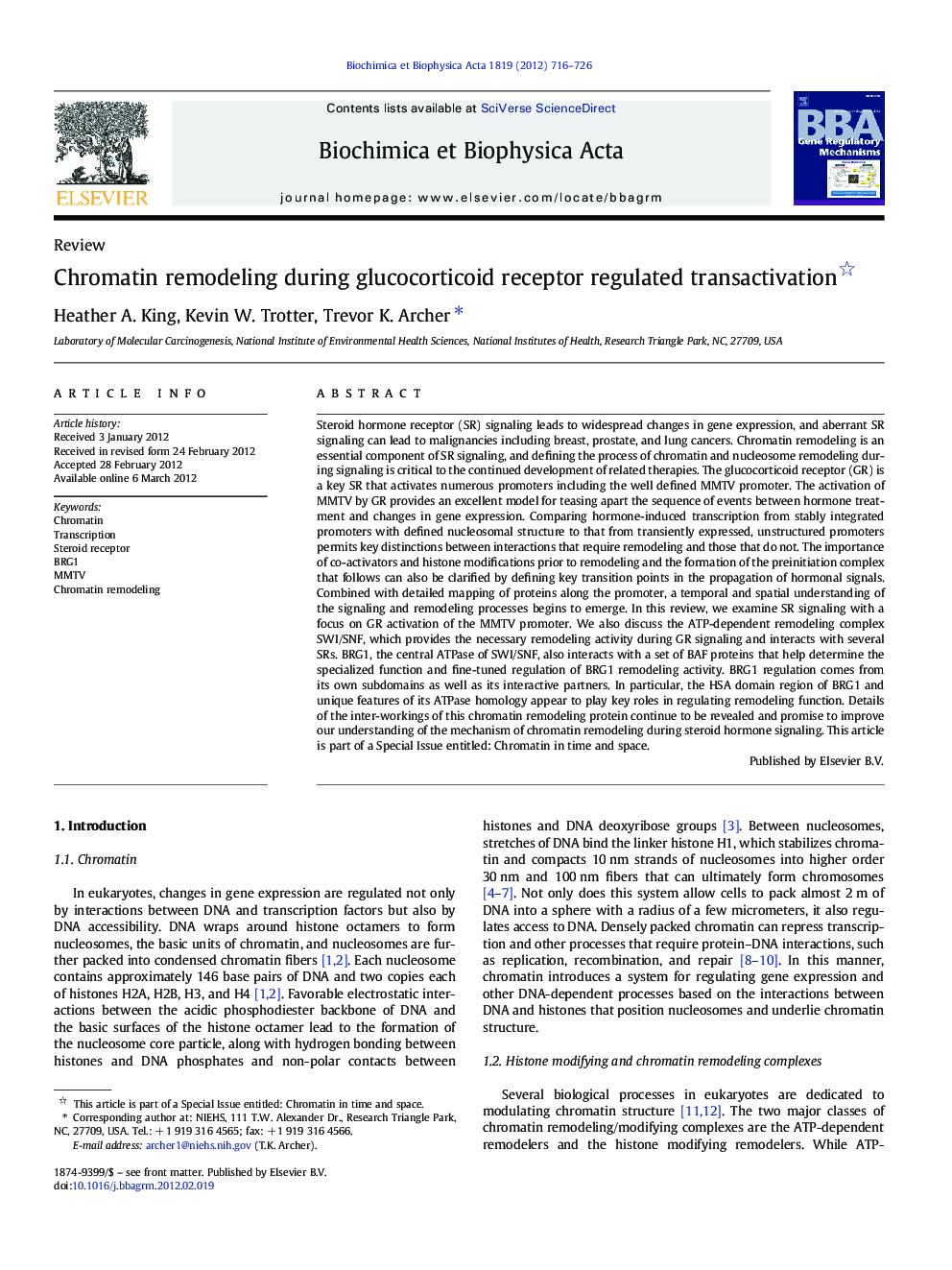| Article ID | Journal | Published Year | Pages | File Type |
|---|---|---|---|---|
| 1946579 | Biochimica et Biophysica Acta (BBA) - Gene Regulatory Mechanisms | 2012 | 11 Pages |
Steroid hormone receptor (SR) signaling leads to widespread changes in gene expression, and aberrant SR signaling can lead to malignancies including breast, prostate, and lung cancers. Chromatin remodeling is an essential component of SR signaling, and defining the process of chromatin and nucleosome remodeling during signaling is critical to the continued development of related therapies. The glucocorticoid receptor (GR) is a key SR that activates numerous promoters including the well defined MMTV promoter. The activation of MMTV by GR provides an excellent model for teasing apart the sequence of events between hormone treatment and changes in gene expression. Comparing hormone-induced transcription from stably integrated promoters with defined nucleosomal structure to that from transiently expressed, unstructured promoters permits key distinctions between interactions that require remodeling and those that do not. The importance of co-activators and histone modifications prior to remodeling and the formation of the preinitiation complex that follows can also be clarified by defining key transition points in the propagation of hormonal signals. Combined with detailed mapping of proteins along the promoter, a temporal and spatial understanding of the signaling and remodeling processes begins to emerge. In this review, we examine SR signaling with a focus on GR activation of the MMTV promoter. We also discuss the ATP-dependent remodeling complex SWI/SNF, which provides the necessary remodeling activity during GR signaling and interacts with several SRs. BRG1, the central ATPase of SWI/SNF, also interacts with a set of BAF proteins that help determine the specialized function and fine-tuned regulation of BRG1 remodeling activity. BRG1 regulation comes from its own subdomains as well as its interactive partners. In particular, the HSA domain region of BRG1 and unique features of its ATPase homology appear to play key roles in regulating remodeling function. Details of the inter-workings of this chromatin remodeling protein continue to be revealed and promise to improve our understanding of the mechanism of chromatin remodeling during steroid hormone signaling. This article is part of a Special Issue entitled: Chromatin in time and space.
► Chromatin remodeling is an essential part of steroid hormone signaling. ► The glucocorticoid receptor is a particularly well explored member of the steroid receptor super family. ► The hormone inducible MMTV promoter provides a model for signal responsive remodeling. ► BRG1 mediated transactivation depends upon the makeup of the BAF complex. ► BRG1 activity is also regulated by its own subdomains and their interacting partners.
